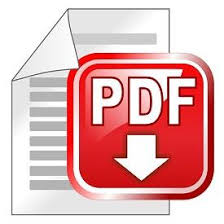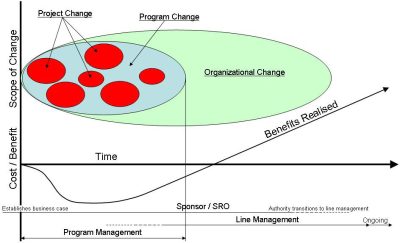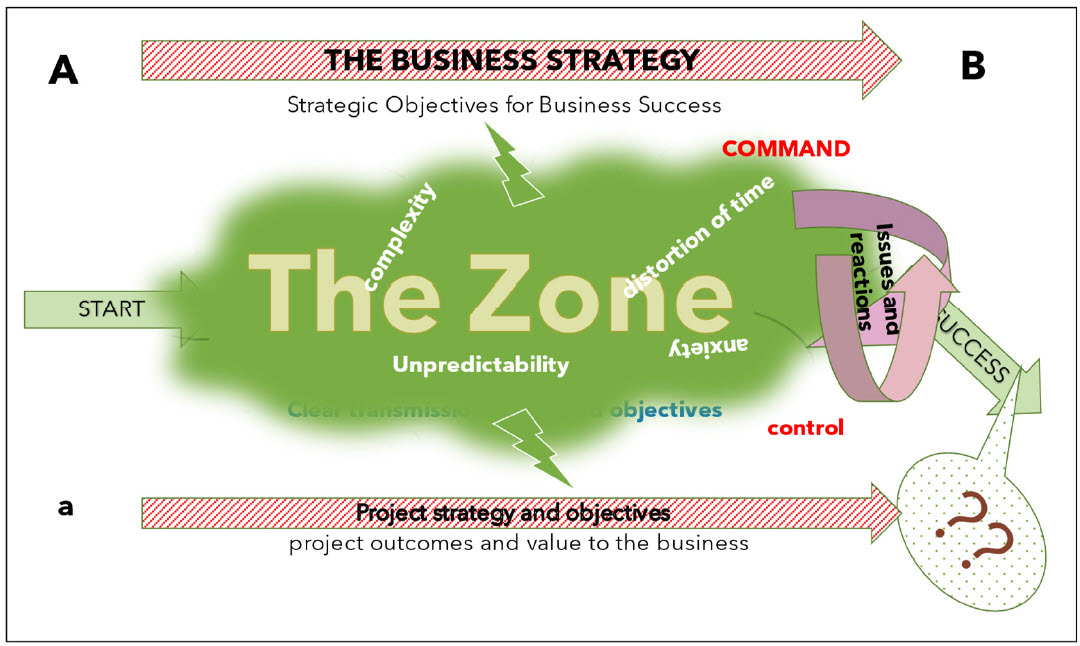Location:
PMKI > Organizations
& Governance > Organizational Change
Mgt.


- Organizational Change Management
- Project Management in the time of
COVID
- Useful External Web-links &
Resources.
Other related sections of the PMKI:
- Project
Change Management
- Benefits
Realization
WP: Organizational
Change Management.  The change challenge is
getting the necessary buy-in from the affected
stakeholders to make effective use of the project’s
deliverables so as to allow the generation of the expected
benefits and create value for the organization.
The change challenge is
getting the necessary buy-in from the affected
stakeholders to make effective use of the project’s
deliverables so as to allow the generation of the expected
benefits and create value for the organization.
Blg: Why organizational change can be difficult. This blog suggests the reason organizational change seems to be far more difficult in some organizations than others and a possible solution!
Art: Creating Value from Change. The different roles involved in generating value from the change created by a project.
Art:
Everyone is talking about change! The
differences between transformational change and normal
change management.
Download the PMI White Paper: Model for Sustainable Change
DP: Project and Change Management in the PMBOK® Guide (PMI Publication). The way various PMI Standards support effective organizational change management.
 PP:
The Forgotten Stakeholders - Forming Teams in an
Outsourced Environment. Organizations have
outsourced their IT functions primarily to reduce costs
and to become more competitive. These outsourcing
agreements are typically subject to intensive negotiation
between the potential supplier group and the
organization's finance group. Rarely is the wider
community of organizational stakeholders consulted, either
before, or during, the negotiation and selection phase.
PP:
The Forgotten Stakeholders - Forming Teams in an
Outsourced Environment. Organizations have
outsourced their IT functions primarily to reduce costs
and to become more competitive. These outsourcing
agreements are typically subject to intensive negotiation
between the potential supplier group and the
organization's finance group. Rarely is the wider
community of organizational stakeholders consulted, either
before, or during, the negotiation and selection phase.
This community of ‘forgotten stakeholders’ is often the group most affected by the outsourcing arrangements. They are the employees who will be transferred to the supplier, offered redundancies or become the ‘survivors’ – the ones left behind. This period of uncertainty leaves the forgotten stakeholders feeling anxious or guilty, often severely affecting their productivity and attitudes to work as the individual experiences alienation resulting from inadequate consultation and change management practices.
This paper outlines some of the reasons for outsourcing IT, and describes the risks to the organization of inadequate preparation in the negotiation of contracts. It also outlines ways to ensure a more successful outsourcing relationship between client and supplier. In addressing alternatives to outsourcing, the paper identifies the importance of trust and commitment in relationships particularly those in teams. Without the establishment of trust and commitment between the individual team members, they will never grow into high-performing teams.
See
more on project change management.
 Organizational
change can be the result of internal management decisions
to restructure, or as a result of changes in the external
environment. Traditional change management as discussed
above, assumes there is a logical reason for the change
and the process is controllable by the organization's
management. This series of papers looks at the
emerging and evolving impact of COVID19 on the way
organizations work and deliver projects. Management has no
control over the consequences of COVID on society, but
still need to respond and reorganize the way work is
accomplished to be successful in a time of COVID
normal.
Organizational
change can be the result of internal management decisions
to restructure, or as a result of changes in the external
environment. Traditional change management as discussed
above, assumes there is a logical reason for the change
and the process is controllable by the organization's
management. This series of papers looks at the
emerging and evolving impact of COVID19 on the way
organizations work and deliver projects. Management has no
control over the consequences of COVID on society, but
still need to respond and reorganize the way work is
accomplished to be successful in a time of COVID
normal.
PP: Uncertainty – Is
it time to rethink?  This
paper considers what uncertainty might mean post-pandemic.
Through a discussion of the concept of a Zone of
Uncertainty, the paper considers how the current
heightened awareness of uncertainty and unknown
unknowns can contribute to more effective risk
management practice, and how the introduction of the
concepts of resilience, persistence, and adaptability may
assist individuals, groups, and organizations to recover,
review and reform their practices.
This
paper considers what uncertainty might mean post-pandemic.
Through a discussion of the concept of a Zone of
Uncertainty, the paper considers how the current
heightened awareness of uncertainty and unknown
unknowns can contribute to more effective risk
management practice, and how the introduction of the
concepts of resilience, persistence, and adaptability may
assist individuals, groups, and organizations to recover,
review and reform their practices.
PP: Rethinking Leadership and Governance Governance and leadership are mutually inclusive. Leaders define and support good governance, while leadership is enhanced by good governance This paper looks at the definitions of governance and leadership, then describes Australia’s pre-pandemic environment in terms of those definitions, followed by an overview of our first two years of lock-downs. The final section discusses how reviews and reforms of governance and leadership practices may be applied to develop a new normal needed to counteract the problems of the past.
PP: Rethinking Teams Teams are central to project delivery, but the current situation of ‘living with COVID’ presents a series of challenges including the challenge of acquiring and supporting teams and team members, and dealing with the residual issues of the pandemic such as anxiety, loss of control over the work product and re-negotiating work-life balance. New modes of working create advantages and disadvantages from the perspective of both workers and organizations. But, how best to manage teams in the new hybrid mode, based on the learnings from the previous decade’s use of virtual teams and deal with the urgent emerging issues such as, shortages of experienced staff, and how to reform training, acquisition and retention of project team members.
 PP:
Rethinking Communication Organizations
everywhere are struggling with the requirements of
returning project planning and delivery to pre-COVID
levels, which in turn creates a range of communication
challenges. They need to prevail over the global threats
of staff and material shortages, the demographic changes
to the project workforce and the general reluctance of
project teams members to resume full-time face-to-face
modes of working. These are complex issues for
organizations and may need courage to introduce innovative
flexible work modes and to introduce new people strategies
to acquire and retain project workers. It is a great
opportunity for innovation and flexibility, and will
require a measure of audacity from often conservative
organizations. To achieve these ambitious goals, they must
ensure that communication and people management strategies
match any changes they plan to introduce, and even more
important, to ensure adequate consultation with their
people.
PP:
Rethinking Communication Organizations
everywhere are struggling with the requirements of
returning project planning and delivery to pre-COVID
levels, which in turn creates a range of communication
challenges. They need to prevail over the global threats
of staff and material shortages, the demographic changes
to the project workforce and the general reluctance of
project teams members to resume full-time face-to-face
modes of working. These are complex issues for
organizations and may need courage to introduce innovative
flexible work modes and to introduce new people strategies
to acquire and retain project workers. It is a great
opportunity for innovation and flexibility, and will
require a measure of audacity from often conservative
organizations. To achieve these ambitious goals, they must
ensure that communication and people management strategies
match any changes they plan to introduce, and even more
important, to ensure adequate consultation with their
people.
PP: Rethinking Change
This is the final paper in the series: PM in the time
of COVID. The objective of this paper is to proffer
practical ways to implement the changes proposed in the
previous four papers, and to identify processes and
actions that can be applied by organizations to assist
with the transition to life post-COVID. It is organized as
follows:
- First, a discussion of the importance of leadership,
engagement of stakeholders, managing uncertainty,
and consultation and communication
- Second a discussion on approaches for effective change
management
- Third a focus on how to identify and counteract
recurring issues in implementing the change.
 The
Stakeholder Circle is a valuable tool to
assist in the assessment and engagement of the
stakeholders critical to successfully implementing the
change, click through
to see more on the Stakeholder
Circle.
The
Stakeholder Circle is a valuable tool to
assist in the assessment and engagement of the
stakeholders critical to successfully implementing the
change, click through
to see more on the Stakeholder
Circle.
Association of Change Management Professionals® (ACMP®) - A nonprofit professional association dedicated to advancing the discipline of change management: https://www.acmpglobal.org/default.aspx